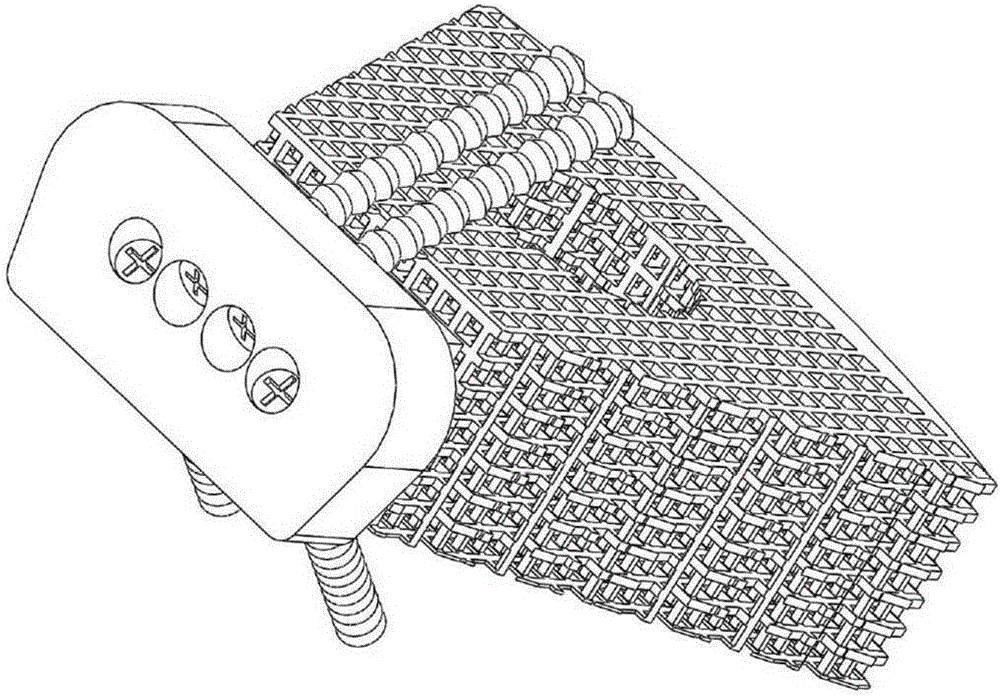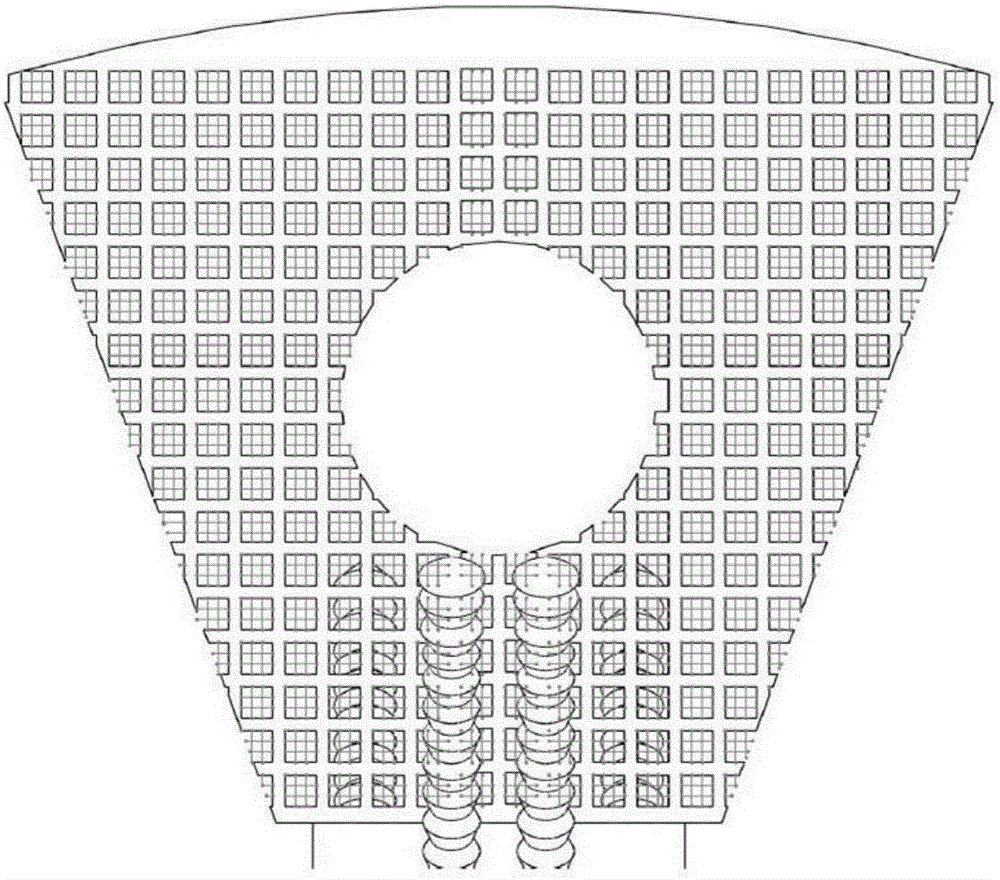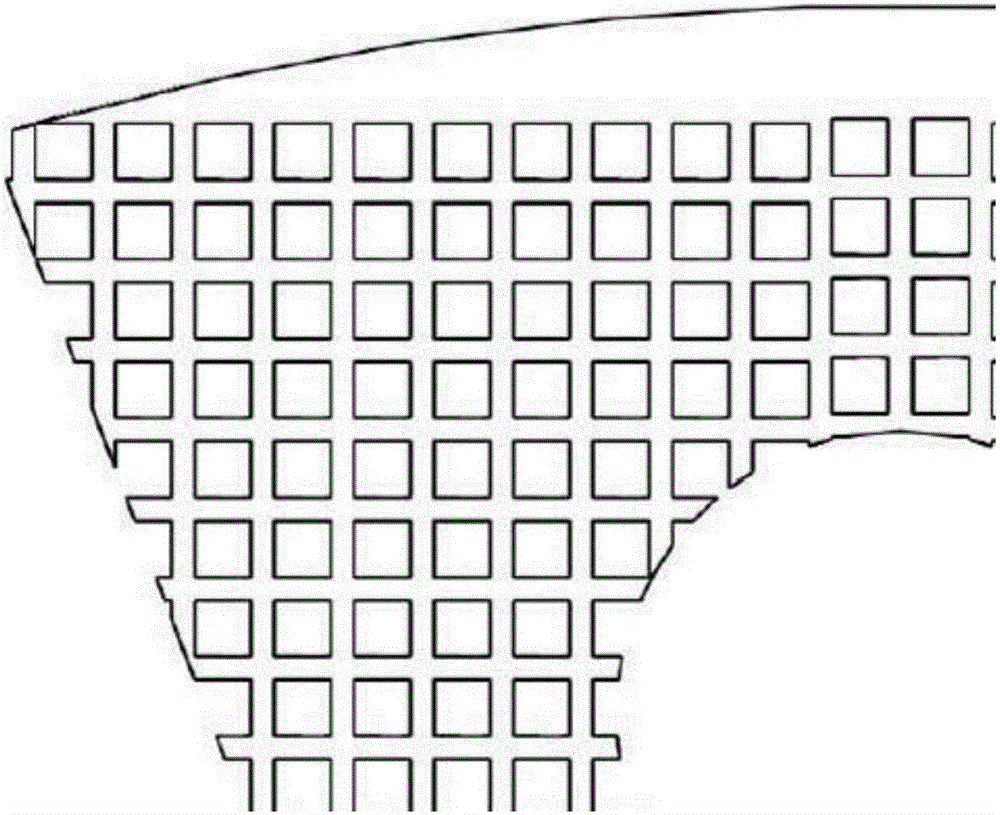Porous metal cervical interbody fusion cage for directionally and slowly releasing rhBMP-2
A porous metal, rhbmp-2 technology, applied in medical science, prostheses, spinal implants, etc., can solve the problems of difficult to achieve cell attachment, growth matrix secretion and filling, unable to achieve three-dimensional hierarchical growth, etc. Effects of cell migration and mass transport, avoidance of hemorrhage, reduction of elastic modulus
- Summary
- Abstract
- Description
- Claims
- Application Information
AI Technical Summary
Problems solved by technology
Method used
Image
Examples
Embodiment 1
[0057] Example 1 Porous Titanium Alloy Cervical Intervertebral Fusion Device for Targeted and Slow Release of rhBMP-2
[0058] A porous titanium alloy cervical intervertebral fusion device for directional slow-release rhBMP-2. The porous titanium alloy cervical intervertebral fusion device is composed of a three-dimensional through porous structure and a solid part without a porous structure. The solid part and the three-dimensional through porous structure are integrated. The solid part seals the side of the three-dimensional penetrating porous structure away from the spinal canal; the three-dimensional penetrating porous structure is a porous titanium alloy scaffold, a three-dimensional micro-stent made of gelatin and nano-hydroxyapatite inside the porous titanium alloy scaffold, and a three-dimensional micro-stent located inside the three-dimensional micro-stent The rhBMP-2 sustained-release system consists of three-dimensional through porous structure facing the spinal cana...
Embodiment 2
[0062] Example 2 Preparation of Porous Titanium Alloy Cervical Intervertebral Fusion Device for Targeted and Slow Release of rhBMP-2
[0063] 1. Preparation of the base body of the cervical intervertebral fusion cage
[0064] 1.1 Import the CT image into Mimics or CAD and other 3D image software to obtain a 3D image of the target bone tissue. The average pore column is 100 μm and the pore diameter is 300 μm. The image is filled and expanded with regular hexahedral structural units to obtain a personalized porous connected 3D digital image. In the model, the diameter of the middle cavity of the stent is 5 mm, the back wall is closed without holes, and the front part is a titanium plate-like structure with screw holes facing both ends.
[0065] 1.2 Using EOSM280 metal material 3D printer, titanium alloy (Ti-6Al-4V) was used as the raw material, and the basic body of the cervical intervertebral fusion cage with a solid part and a porous titanium alloy bracket was printed accordin...
Embodiment 3
[0074] Example 3 Preparation of Porous Titanium Alloy Cervical Intervertebral Fusion Device for Targeted and Slow Release of rhBMP-2
[0075] 1. Preparation of the base body of the cervical intervertebral fusion cage
[0076] 1.1 Import the CT image into Mimics or CAD and other 3D image software to obtain a 3D image of the target bone tissue. The average pore column is 100 μm and the pore diameter is 300 μm. The image is filled and expanded with regular hexahedral structural units to obtain a personalized porous connected 3D digital image. In the model, the diameter of the middle cavity of the stent is 5 mm, the back wall is closed without holes, and the front part is a titanium plate-like structure with screw holes facing both ends.
[0077] 1.2 Using EOSM280 metal material 3D printer, titanium alloy (Ti-6Al-4V) was used as the raw material, and the basic body of the cervical intervertebral fusion cage with a solid part and a porous titanium alloy bracket was printed accordin...
PUM
| Property | Measurement | Unit |
|---|---|---|
| Aperture | aaaaa | aaaaa |
Abstract
Description
Claims
Application Information
 Login to View More
Login to View More - R&D
- Intellectual Property
- Life Sciences
- Materials
- Tech Scout
- Unparalleled Data Quality
- Higher Quality Content
- 60% Fewer Hallucinations
Browse by: Latest US Patents, China's latest patents, Technical Efficacy Thesaurus, Application Domain, Technology Topic, Popular Technical Reports.
© 2025 PatSnap. All rights reserved.Legal|Privacy policy|Modern Slavery Act Transparency Statement|Sitemap|About US| Contact US: help@patsnap.com



